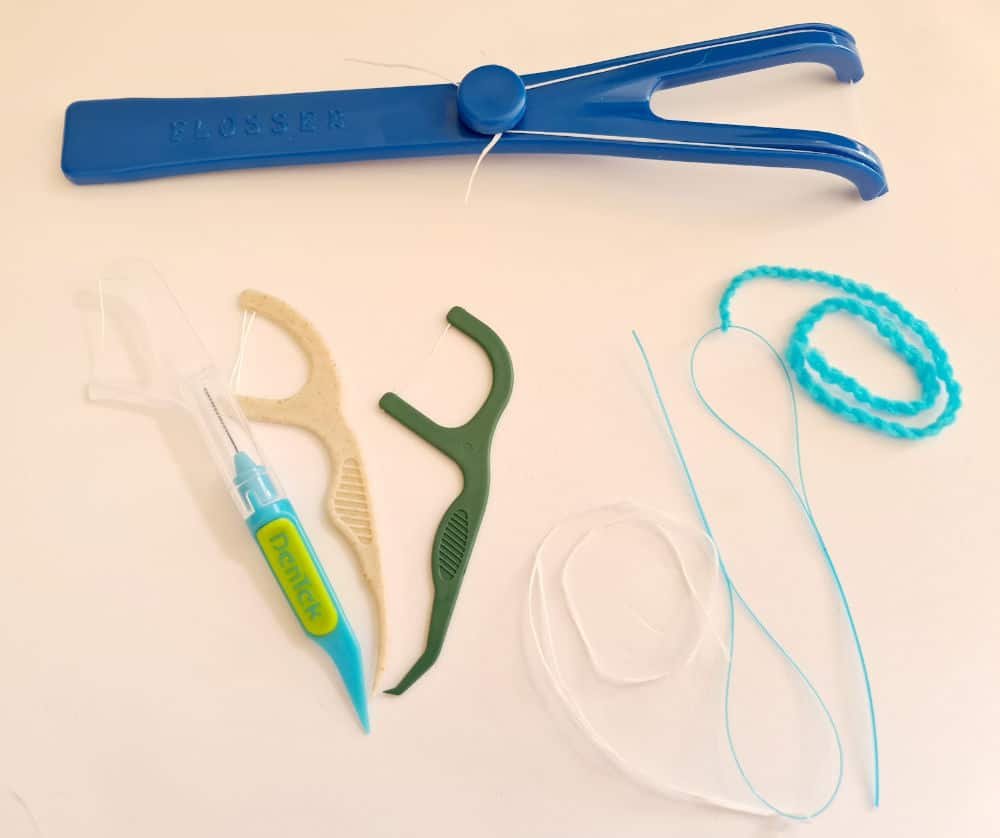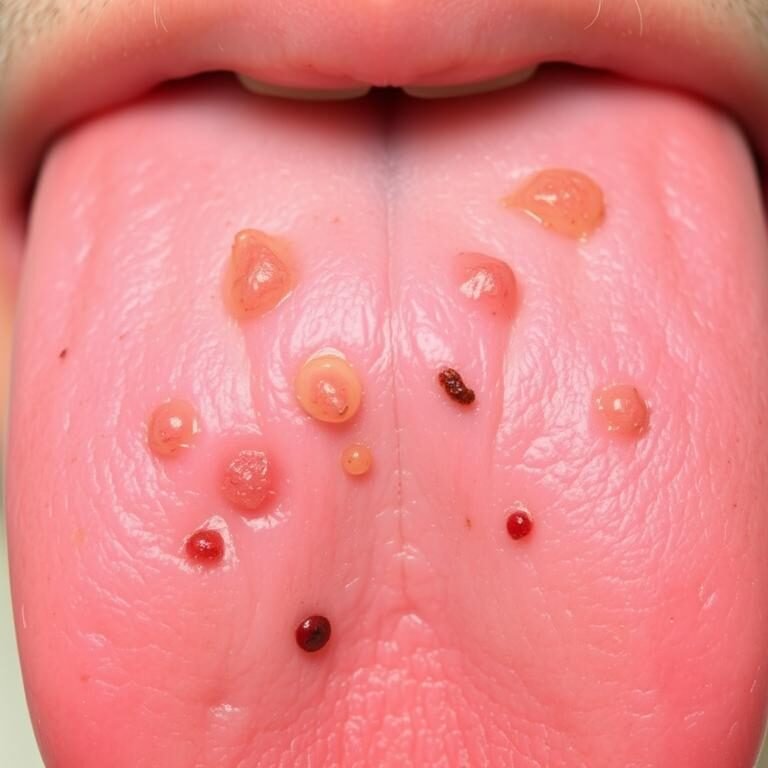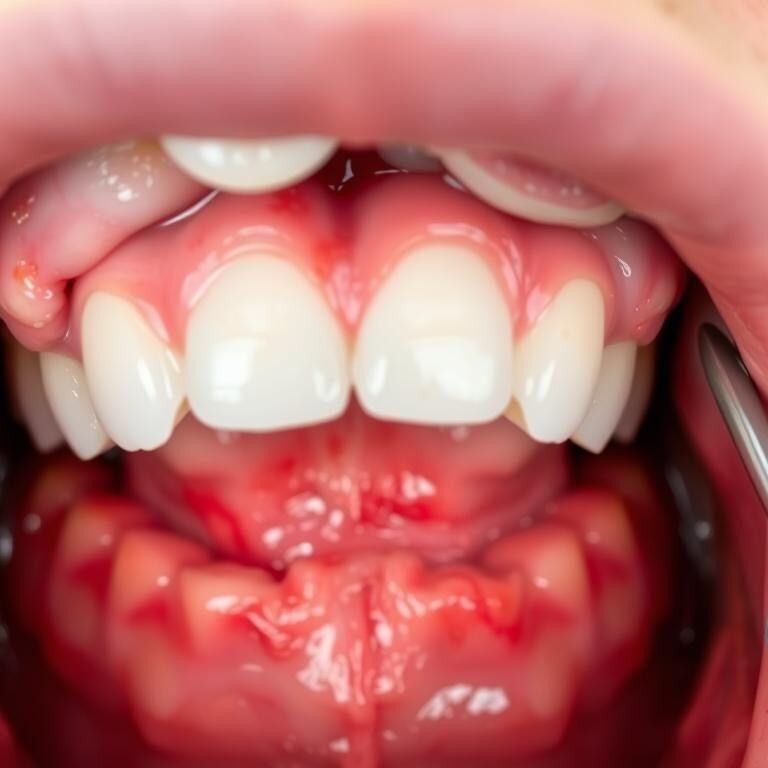Table of Contents
The Importance of Flossing for Oral Health

Flossing is a crucial aspect of maintaining good oral health. While brushing helps remove food particles and plaque from the surfaces of your teeth, flossing is necessary to clean the tight spaces in between. These interdental spaces are havens for plaque buildup, which can lead to tooth decay, gum disease, and bad breath if not effectively removed. Flossing not only keeps your teeth clean but also helps prevent periodontal disease by reducing the risk of inflammation and infection in the gums.
By incorporating flossing into your daily oral hygiene routine, you are taking proactive steps to protect your teeth and gums from potential dental issues. Research has shown that flossing can significantly decrease the occurrence of cavities and gum disease, ultimately contributing to better overall oral health. Remember, a few minutes dedicated to flossing each day can make a substantial difference in the long-term well-being of your teeth and gums.
Understanding Plaque and Its Impact on Teeth
Plaque is a sticky, colorless film of bacteria that constantly forms on your teeth. This buildup occurs when sugars and starches from food interact with the bacteria in your mouth, leading to the production of acids that can attack enamel. If not removed through proper oral hygiene practices like brushing and flossing, plaque can harden into tartar, which is more challenging to remove and can eventually lead to gum disease.
The impact of plaque on teeth is significant, as it can cause tooth decay, gingivitis, and periodontitis if left unchecked. Tooth decay, also known as cavities, occurs when the acids from plaque break down tooth enamel. Gingivitis is characterized by red, swollen gums that may bleed easily, while periodontitis is a more severe form of gum disease that can result in tooth loss if not treated promptly. Understanding the formation of plaque and its detrimental effects is crucial in maintaining optimal oral health and preventing more serious dental issues in the long run.
Different Types of Dental Floss Available
When it comes to oral hygiene, choosing the right dental floss is key to maintaining healthy teeth and gums. There are several types of dental floss available, each with its unique features to cater to different individual needs. One of the most common types is nylon floss, which is strong and durable, making it suitable for most people. Another popular option is PTFE floss, also known as glide floss, which is designed to easily slide between teeth without shredding. For those with sensitive gums or braces, waxed floss can be a gentler alternative as it is less likely to cause irritation.

For individuals with wider gaps between their teeth, tape floss may be more effective as it is broader and can cover a larger surface area. On the other hand, those with tight spaces between their teeth may benefit from using threader floss, which incorporates a built-in threader to help navigate hard-to-reach areas. Water flossers, which use pressurized water to clean between teeth, are another alternative for those looking for a more advanced flossing method. Ultimately, the best type of floss for you will depend on your specific oral health needs and preferences.
Proper Technique for Using Dental Floss
Flossing is a crucial aspect of maintaining optimal oral hygiene and preventing dental issues. When it comes to using dental floss, proper technique is key to effectively removing plaque and food particles from between your teeth. To ensure you are flossing correctly, start by taking about 18 inches of dental floss and wrapping it around your middle fingers, leaving about 1-2 inches of floss to work with in between.
Next, gently guide the floss in between each tooth, forming a “C” shape around the tooth and moving the floss up and down to scrape off any buildup. Be sure to floss below the gumline as well, as this area is often missed but can harbor bacteria leading to gum disease. Repeat this process for each tooth, using a fresh section of floss each time to prevent spreading bacteria. Proper flossing technique, when done consistently, can help maintain a healthy smile and prevent issues like cavities and gum disease.
Common Mistakes to Avoid While Flossing
When it comes to flossing, there are certain common mistakes that individuals often make, compromising the effectiveness of their oral hygiene routine. One prevalent error is snapping the floss between the teeth too forcefully, which can lead to gum irritation and even cause the floss to break, leaving debris behind. Another mistake to avoid is neglecting the gum line while flossing. Proper flossing technique involves gently guiding the floss beneath the gum line to remove plaque and debris that can contribute to gum disease.
Additionally, rushing through the flossing process is another common error to steer clear of. Effective flossing requires patience and attention to detail to ensure all surfaces between the teeth are thoroughly cleaned. It’s important to take your time and floss each tooth individually, using a clean section of the floss for each interdental space. By avoiding these common mistakes and practicing proper flossing technique, you can significantly improve your oral health and prevent issues such as cavities, gum disease, and bad breath.
How Often Should You Floss?
Flossing is a crucial aspect of maintaining optimal oral health, yet the question of how often one should floss often arises. The American Dental Association recommends flossing at least once a day to effectively remove plaque and food particles from between the teeth and along the gum line. Consistency is key when it comes to flossing, as it helps prevent the buildup of plaque and reduces the risk of tooth decay and gum disease.
Table
| Aspect | Recommendation |
|---|---|
| Frequency | Floss at least once a day to remove plaque and food particles that your toothbrush can’t reach. |
| Timing | The best time to floss is the time that fits comfortably into your schedule, whether it’s morning or night. |
| Technique | Use gentle motions to avoid damaging your teeth and gums; flossing too vigorously may cause harm. |
| Consistency | Daily flossing is key for preventing tooth decay, gum disease, and other oral health issues. |
| Alternatives | If traditional flossing is difficult, consider alternatives like water flossers or interdental brushes. |
Establishing a daily flossing routine can significantly contribute to your overall oral health. By incorporating flossing into your daily dental hygiene regimen, you can prevent the development of cavities, gingivitis, and other dental issues. Remember, flossing complements regular brushing by cleaning areas that a toothbrush cannot reach, promoting healthier teeth and gums in the long run.
Benefits of Regular Flossing
Regular flossing is a crucial aspect of maintaining optimal oral health. By incorporating flossing into your daily oral hygiene routine, you can effectively remove plaque and food particles from the areas between your teeth that a toothbrush may not reach. This diligent practice helps prevent the buildup of plaque, which can lead to cavities, gum disease, and other dental issues over time. Additionally, flossing regularly can contribute to fresher breath and a cleaner, healthier mouth.
Furthermore, studies have shown that individuals who floss regularly may experience a reduced risk of developing gum disease. Gum disease, if left untreated, can progress to more severe conditions, impacting not only your oral health but also your overall well-being. By investing a few minutes each day in flossing, you are taking proactive steps to support the longevity of your teeth and gums, ultimately enhancing your quality of life.
Incorporating Flossing into Your Daily Oral Hygiene Routine
Flossing is a crucial aspect of maintaining optimal oral health, helping to remove food particles and plaque from between teeth where toothbrushes can’t reach. Incorporating flossing into your daily oral hygiene routine is essential for preventing dental issues such as cavities, gum disease, and bad breath. By making flossing a habit alongside brushing, you can significantly enhance the cleanliness of your mouth and promote overall dental wellness.
To effectively incorporate flossing into your daily routine, it is recommended to floss at least once a day, preferably before bedtime. By establishing a consistent flossing schedule, you can ensure that you are adequately cleaning the areas between your teeth on a regular basis. Additionally, using the proper flossing technique with a gentle back-and-forth motion and wrapping the floss around each tooth in a C-shape helps to dislodge debris and plaque effectively. By making flossing a priority in your oral care regimen, you can contribute to the longevity of your teeth and gums.
Tips for Flossing with Braces or Dental Appliances
Maintaining proper oral hygiene becomes even more challenging when braces or other dental appliances are involved. Flossing with braces or dental appliances requires some additional care and attention to ensure that all areas are thoroughly cleaned.
When flossing with braces or dental appliances, using a floss threader can be incredibly helpful. This tool allows you to navigate the dental floss underneath the wires and between the teeth with ease. Additionally, opting for waxed floss can prevent shredding and make the flossing process smoother. Remember to floss gently to avoid damaging the braces or appliances, and take your time to ensure that each crevice is cleaned effectively.
Table
| Tip | Description |
|---|---|
| Use Waxed Floss | Waxed floss is less likely to catch on braces and is easier to slide between teeth. |
| Floss Threader | A floss threader can help guide floss behind the wires of braces for effective cleaning. |
| Water Flosser | An oral irrigator or Waterpik can clean around braces and between teeth with a stream of water. |
| Dental Tape | Dental tape is broader and flatter than standard floss and can be useful for those with braces. |
| Regular Cleanings | Schedule regular cleanings with a dental hygienist to maintain oral health with braces. |
| Avoid Whitening Toothpaste | Whitening toothpastes can lead to uneven color if used with braces. |
| Electric Toothbrush | Consider using an electric toothbrush for more effective cleaning around braces. |
| Gentle Technique | Be gentle when flossing to avoid damaging braces and causing discomfort. |
Flossing for Children: When and How to Start
Flossing for children is an essential part of their oral hygiene routine, helping to prevent cavities and maintain overall dental health. The American Dental Association recommends starting to floss as soon as your child has two teeth that touch. This typically occurs around the age of 2 to 3 years old.
When introducing flossing to children, it’s important to use a gentle approach. Begin by demonstrating the proper technique and emphasizing the importance of flossing in a positive and encouraging manner. Choosing child-friendly floss picks or floss holders can make the process easier and more engaging for young children. Remember to supervise your child’s flossing until they have developed the dexterity and coordination to do it effectively on their own.
Alternative Flossing Tools and Devices
When it comes to maintaining good oral hygiene, traditional string floss is not the only option available. In addition to regular dental floss, there are alternative tools and devices that can effectively clean between teeth and along the gum line. One popular option is a water flosser, which uses a stream of water to remove food particles and plaque. Water flossers are especially beneficial for individuals with braces, dental implants, or other dental appliances, as they can reach areas that traditional floss may struggle to access.
Another alternative to traditional floss is interdental brushes. These small brushes have bristles that can fit between teeth to remove plaque and debris. Interdental brushes come in various sizes to accommodate different gaps between teeth, making them a versatile option for individuals with varying tooth spacing. Some people may find interdental brushes easier to use than traditional floss, especially if they have difficulty maneuvering string floss effectively.
How to Choose the Right Floss for Your Teeth
When selecting the right type of floss for your teeth, it is essential to consider the spacing between your teeth. If your teeth are tightly packed together, waxed floss or dental tape may be more effective as they are less likely to shred or get stuck. On the other hand, for teeth with wider gaps or dental work such as bridges or braces, spongy floss or threader floss could be more suitable for thorough cleaning without causing damage. Understanding your specific dental needs and discussing them with your dentist will help determine the most appropriate floss for your oral hygiene routine.
Additionally, certain individuals may have sensitivities or conditions that require specialized floss options. For those with sensitive gums or prone to bleeding, soft floss or floss infused with soothing ingredients like aloe vera can help reduce irritation. Patients with braces, dental implants, or other dental appliances may benefit from using orthodontic floss or floss threaders to navigate around these structures effectively. By customizing your floss choice based on your unique dental characteristics, you can optimize your flossing routine for improved oral health outcomes.
Overcoming Common Challenges with Flossing
Flossing is an essential part of maintaining good oral hygiene, yet many people face common challenges when incorporating this practice into their daily routine. One common issue is difficulty in maneuvering the floss properly between tightly spaced teeth. This can be overcome by using a thinner, waxed floss that easily glides between the teeth without shredding or getting stuck. Another challenge is the discomfort or bleeding that some individuals experience while flossing. This may indicate gum inflammation or improper technique. It’s crucial to be gentle yet thorough when flossing to prevent irritation.

Moreover, time constraints and lack of motivation are recurring obstacles in maintaining a consistent flossing habit. To tackle this challenge, try incorporating flossing into your nightly routine before brushing your teeth. Setting a reminder on your phone or leaving floss in a visible place can also serve as helpful reminders. Remember, the benefits of flossing extend beyond just cleaner teeth; it contributes significantly to your overall oral health and can prevent serious dental issues in the future. By recognizing and addressing these common hurdles, you can enhance the effectiveness of your oral care regimen.
The Connection Between Flossing and Gum Disease
Gum disease, or periodontal disease, is a common yet serious condition that can lead to tooth loss and impact overall oral health. Flossing plays a crucial role in preventing and managing gum disease by removing plaque and food particles from between teeth and along the gum line. When plaque is not effectively removed through proper oral hygiene practices, it can harden into tartar, leading to gum inflammation and potential infection.
Regular flossing is directly linked to a decreased risk of developing gum disease. Research indicates that individuals who floss daily have healthier gums and reduced incidence of gingivitis and periodontitis compared to those who do not floss regularly. By incorporating flossing into your daily oral care routine, you not only promote healthier gums but also contribute to overall better oral hygiene and reduced risk of developing more severe dental issues associated with gum disease.
Consulting with Your Dentist for Flossing Recommendations
When it comes to flossing, consulting with your dentist can provide valuable insights tailored to your specific oral health needs. Dentists are trained professionals who can assess the condition of your teeth and gums, identify any areas of concern, and recommend the most effective flossing techniques for you. By seeking guidance from your dentist, you can ensure that you are flossing correctly and addressing any potential issues before they escalate.
Additionally, your dentist can recommend the most suitable type of dental floss for your teeth and gums. With a wide range of flossing options available in the market, from waxed to unwaxed, flavored to unflavored, thick to thin, seeking your dentist’s advice can help you choose the one that best suits your individual needs. By incorporating your dentist’s recommendations into your flossing routine, you can enhance the effectiveness of your oral hygiene efforts and maintain optimal dental health.
How can I determine which type of dental floss is best for my teeth?
It is best to consult with your dentist for personalized recommendations based on your specific oral health needs. They can help you choose the right floss that will be most effective for cleaning between your teeth.
Can children start flossing at a young age?
Yes, it is recommended to start flossing children’s teeth as soon as they have teeth that touch each other. Your dentist can provide guidance on when and how to start flossing for your child.
What are some common challenges people face when flossing?
Some common challenges include difficulty reaching back teeth, discomfort while flossing, and forgetting to floss regularly. Your dentist can provide tips and techniques to help you overcome these challenges.
How often should I visit my dentist for check-ups related to flossing?
It is recommended to visit your dentist for regular check-ups and cleanings every six months. During these visits, your dentist can assess your flossing technique and provide additional guidance if needed.
Can flossing help prevent gum disease?
Yes, regular flossing can help prevent gum disease by removing plaque and bacteria from between your teeth and along the gumline. Consult with your dentist for personalized recommendations on how to improve your flossing routine for optimal gum health.












